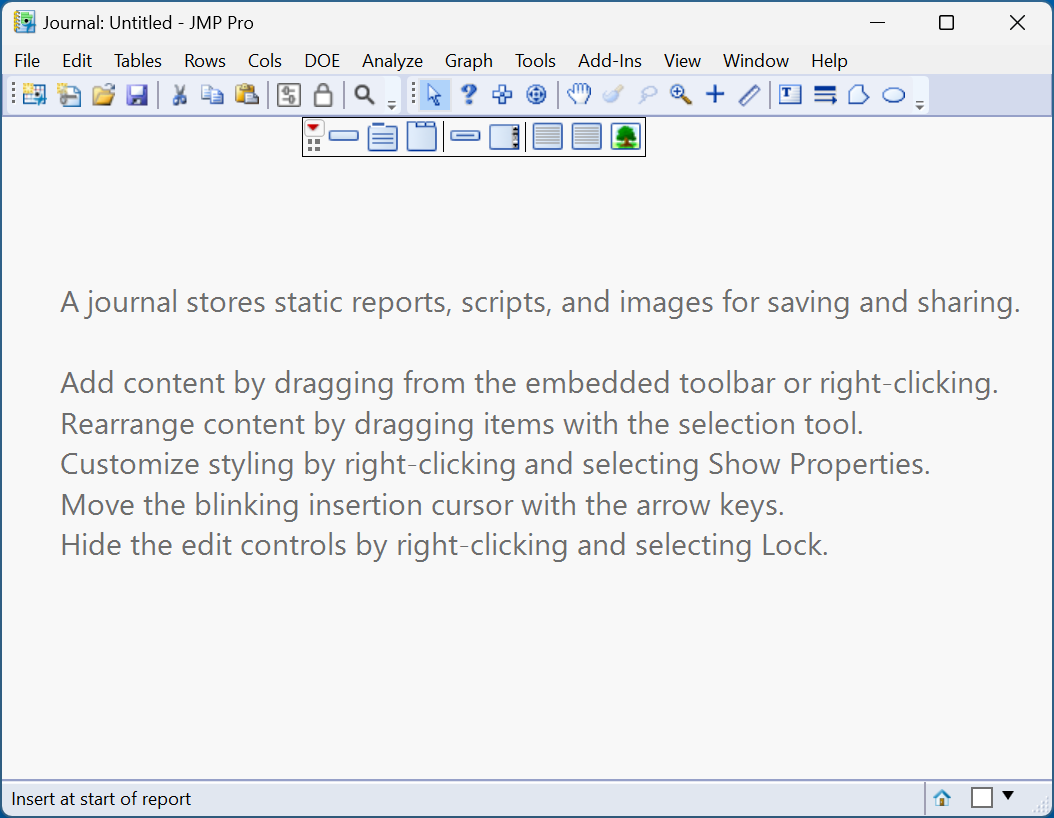
When you create a new journal, you are presented with an empty window – which can feel a bit intimidating.
What content should you add, and why?
I take a look at 4 use-cases for JMP Journals …

When you create a new journal, you are presented with an empty window – which can feel a bit intimidating.
What content should you add, and why?
I take a look at 4 use-cases for JMP Journals …
The ability of JMP Software to easily create decision trees makes it a fantastic tool for troubleshooting.
I’m going to share with you 3 tips to increase their effectiveness.
In this post I take a look at how JSL can be used to perform string manipulation.
Here’s a handy little function to apply a transparency effect to a solid (r,g,b) colour:
|
1 2 3 4 5 6 7 8 |
TransparentRGB = function({r,g,b,opacity=0.65},{default local}, red = opacity*r + (1-opacity); green = opacity*g + (1-opacity); blue = opacity*b + (1-opacity); return(RGBColor(red,green,blue)); ); |
The JMP scripting language has a number of convenient functions for handling files external to JMP. Here’s an example:
|
1 2 3 4 5 6 7 8 |
// purge the temporary folder files = filesIndirectory(tmpDir); for (i=1,i<=nItems(files),i++, path = convertFilePath(files[i],base(tmpDir)); if (!isDirectory(path), deleteFile(path) ) ); |
Code folding allows you to collapse a block of code – you can use it to focus on high-level structure without getting lost in the detail.
To enable code folding enable to option under the Script Editor section of Preferences, found under the File menu.
I use it with my user-defined functions to give me an overview of contents within an include file. Combined with appropriately placed comments this helps to summarise the contents of a library of functions. Here is an example:
In my last post I introduced the idea of using the JSL script editor as a simple command line calculator; and prior to that I discussed how process capability indices (Cp,Cpk) are a convenient shorthand notation but suffer from lack of transparency. Today I will bring these two themes together by showing how I can use the JSL script editor to calculate defective parts per million (dppm) for a given set of capability indices Cp and Cpk.
You don’t need to be a programmer to make productive use of the JSL script editor. The editor can be used by non-programmers as a simple command-line calculator that provides access to JMP’s library of mathematical and statistical functions.
It turns out that the prediction profiler has a hidden secret. And not just some easter egg feature that is just a bit of fun. This secret is core to how you use the profiler – and might just totally change how you use it in future.
JSL is often described as a scripting language. Personally I think that doesn’t do it justice. I prefer to think of it as a programming language. The difference? For me an obvious difference is that instead of using hard-coded values I want to use variables. In particular I want to use variables to handle column references.